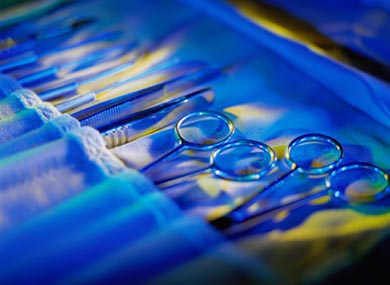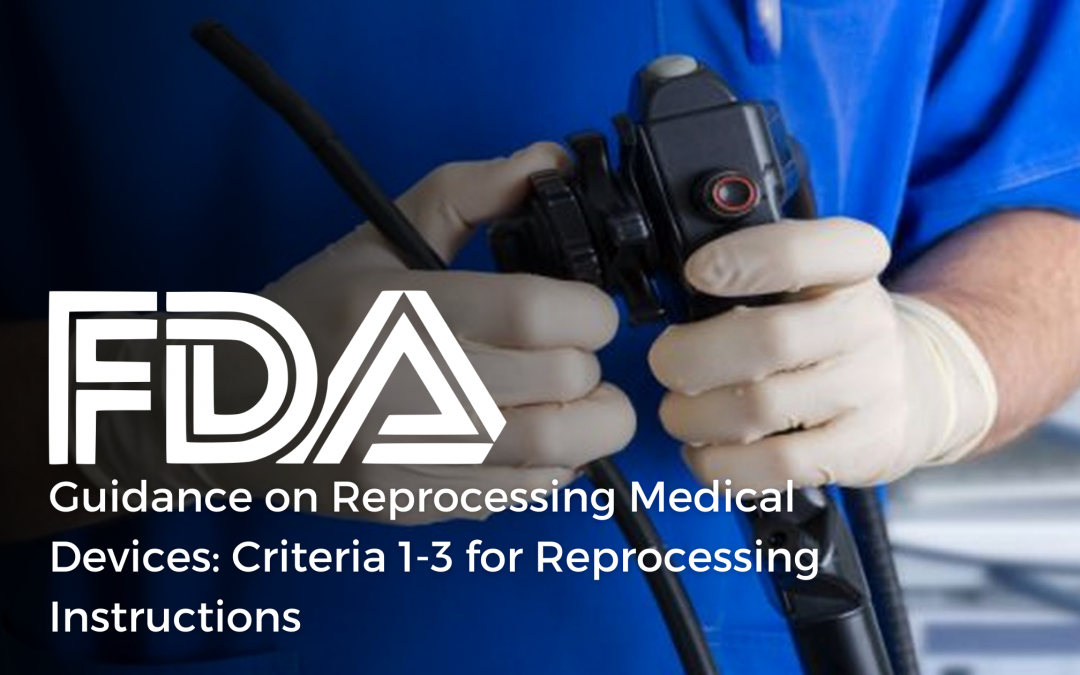The Food and Drug Administration (FDA or the Agency), the US regulating authority in the sphere of healthcare products, has published a guidance document on reprocessing medical devices in healthcare settings. The document highlights the most important aspects associated with validation methods and labeling.

Table of Contents
Due to its legal nature, the guidance does not introduce new requirements itself but provides additional recommendations to be considered by parties involved in order to ensure compliance with the applicable legislation. The authority states that an alternative approach could be applied, provided such an approach complies with any and all applicable regulatory requirements and has been approved by the authority in advance.
The present article describes the first three of the six criteria for reprocessing instructions outlined by the Agency in the aforementioned guidance document on reprocessing medical devices. According to the guidance, the labeling should contain clear and understandable reprocessing instructions to be followed by users. The criteria described herein are intended to assess whether labeling complies with the aforementioned requirement.
Intended Use of the Device
The first criterion states that the labeling should provide information about the intended use of the medical device on which it is placed. Hence, the reprocessing instructions should correspond to the design of the device and its intended use, as the nature and extent of contamination will depend on how the device is used. In order to determine the approach to be applied, it is necessary to determine whether the device will:
- Contact only intact skin;
- Contact intact mucosal surface;
- Contact normally sterile tissues, blood, or bodily fluids such as cerebrospinal fluid, peritoneal fluid, aqueous humor, etc.;
- Be subject to splatter or splash of body fluids or blood because of proximity to the patient, although it is not in direct contact with the patient;
- Be subject to contamination during use from contact with soiled hands of patient caregivers or patients;
- Be subject to contamination by unexpected or accidental events;
- Be subject to reprocessing with disinfectants or other chemicals that might leave harmful residues, or adversely affect device materials or performance, if inadequately rinsed; or
- Present specific or unique risks to the patient or user.
Cleaning a Reusable Device
When describing the second criterion, the authority also emphasizes that the instructions on reprocessing reusable medical devices should contain recommendations to clean the device rigorously. Usually, reprocessing begins with cleaning. The overall effectiveness of the following disinfection and sterilization significantly depends on the effectiveness of the initial cleaning. Hence, this procedure should be described in detail in the information materials accompanying the device. In particular, the description of cleaning procedures should be based on the design of a medical device and its components. In certain cases, it could be difficult to ensure efficient enough cleaning of certain elements of a medical device due to its design; additional disassembly could be required. For such situations, detailed enough disassembly and assembly instructions should be provided.
Due to the abovementioned factors, the ease and effectiveness of cleaning a medical device should be one of the points considered by the medical device manufacturer at the early design development stage in order to implement the appropriate solutions. For instance, it could be an option to use protective covers that will reduce the medical device’s exposure to contamination. In such a case, the instructions for use should contain information about the covers and how they should be used in order to ensure their efficiency, as well as the safety and efficiency of the medical device in general. Should such protective covers be manufactured by an entity another from the manufacturer of a device itself, all references to the recommended covers should be made to legally marketed accessories only. At the same time, the cleaning instructions to be provided by the manufacturer should also address situations when the device is used without a protective cover, as long as the risk of a cover being damaged during the use exists. In this regard, the Agency states that unnoticed loss of cover integrity may result in degrees of soiling that are difficult to see but will present a risk to the health of the next patient unless the device is properly reprocessed.
Should the device require flushing, the instructions should also contain information about the flushing agent, including its type and volume.

Microbicidal Process Description
Another important aspect addressed in the FDA guidance refers to infection control. As prescribed by the third criterion, the instructions on reprocessing should contain a description of a microbicidal process, such as sterilization or disinfection. Its level should depend on the intended use of the device. The authority additionally emphasizes that the methods recommended by the medical device manufacturer should be duly validated in order to ensure their effectiveness. In general, the approach to sterilization and disinfection should be based on the risks arising from the use of the device and the level of contamination it could be subject to during normal use.
In this regard, all medical devices could be divided into three categories, namely:
- Critical devices – those that are introduced directly into the bloodstream or which contact a normally sterile tissue or body space during use. In such a case, a risk appears when the device itself is not sterile. This category covers surgical instruments and endoscopes.
- Semi-Critical Devices are ones that contact intact mucous membranes or non-intact skin. Hence, such devices are not intended to be in direct contact with sterile areas. At the same time, the level of reprocessing for such devices should be high enough to reduce the risks associated with contamination. According to the guidance, such devices should be subject to cleaning and consequent sterilization. This category includes such devices as duodenoscopes, bronchoscopes, and gastrointestinal endoscopes.
- Non-Critical Devices are instruments and other devices whose surfaces contact only intact skin and do not penetrate it. This category also includes medical devices that are not initially intended to be in contact with the patient’s skin but could still be subject to contamination. In this case, the authority recommends applying cleaning followed by intermediate or low-level disinfection. This category includes such devices as skin electrodes or blood pressure cuffs.
Specific requirements are also applicable in the case of medical devices intended to be in contact with blood due to the risks associated with blood-borne pathogens. This should be reflected in the instructions for use and reprocessing and also considered when determining the cleaning agents to be used.
In all the cases, the FDA recommends considering worst-case scenarios in order to ensure a sufficient level of safety of patients.
In summary, the present FDA guidance describes the criteria to be applied with regard to reprocessing instructions to be provided by the medical device manufacturer. The document highlights the most important aspects to be considered depending on the design and intended purpose of the device in question.
Sources:
How Can RegDesk Help?
RegDesk is a next-generation web-based software for medical device and IVD companies. Our cutting-edge platform uses machine learning to provide regulatory intelligence, application preparation, submission, and approvals management globally. Our clients also have access to our network of over 4000 compliance experts worldwide to obtain verification on critical questions. Applications that normally take 6 months to prepare can now be prepared within 6 days using RegDesk Dash(TM). Global expansion has never been this simple.


